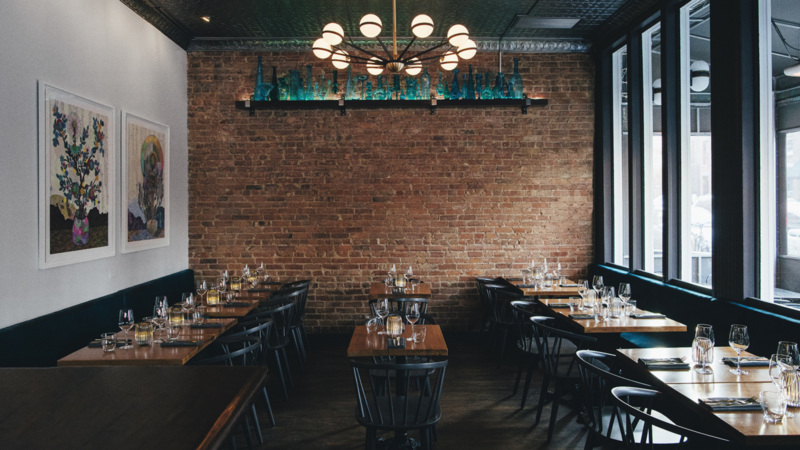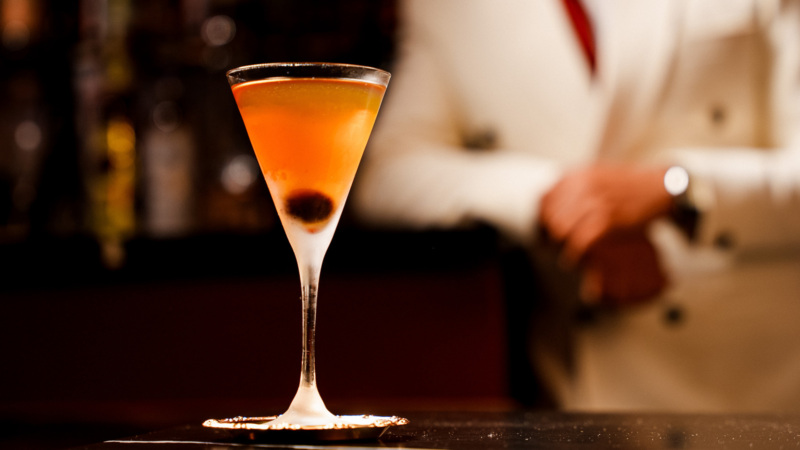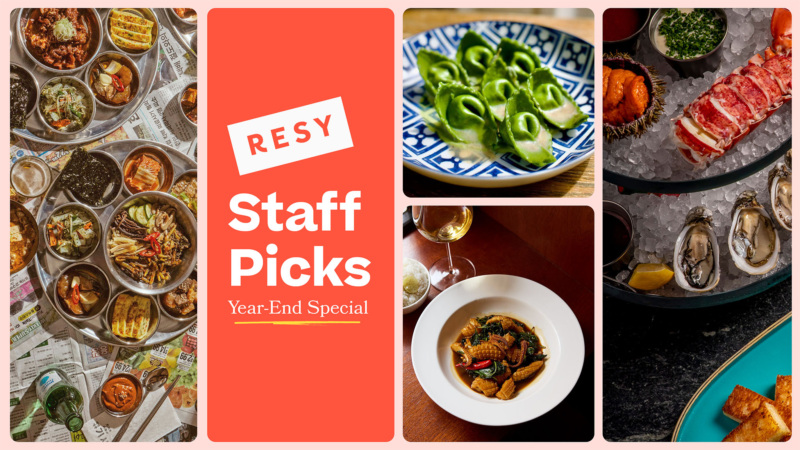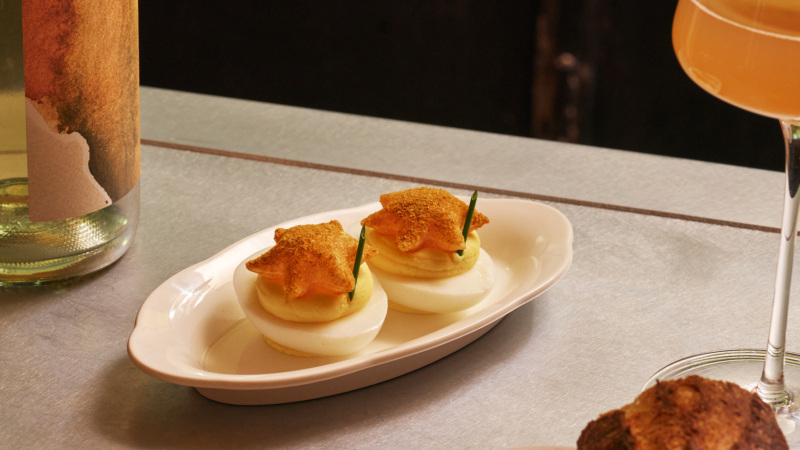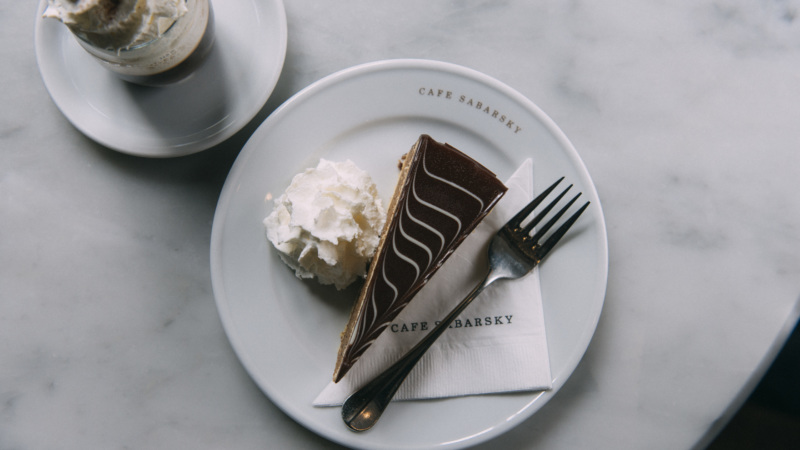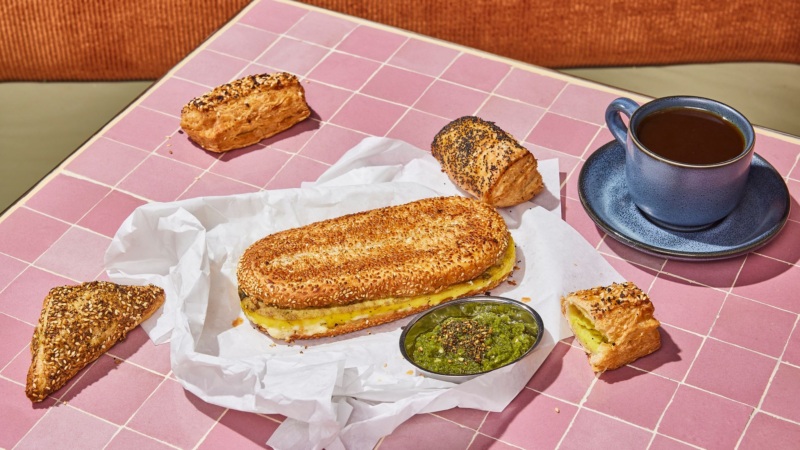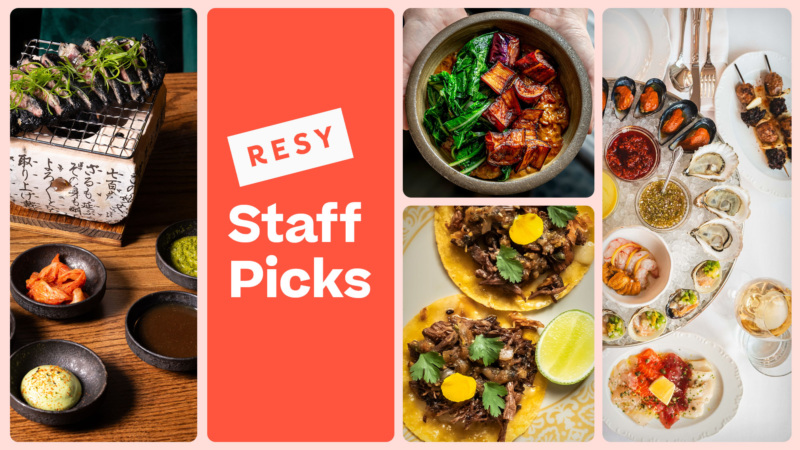
How Rangoon’s Myo Moe Evokes Burmese Nostalgia, Through Five Dishes
Published:
In a city that’s home to at least 156 cuisines, and infinitesimal regional differences therein, Burmese food has remained something of a rarity in New York. But chef Myo Moe has been leading the charge in bringing it to the fore — and betting big while doing so.
The Myanmar-born chef blew on to the scene in 2015 with her weekly Rangoon NoodleLab pop-up series in Ridgewood, quickly nabbing an Eater review. Since then, Moe, with her husband and business partner, Daniel Bendjy, has been steadily building out her Burmese base — opening acclaimed Rangoon along the Crown Heights-Prospect Heights border in 2020, the takeout and delivery-focused Mandalay Club in a CloudKitchens ghost kitchen in Long Island City, and a new crowd-funded restaurant that’s currently in the works in Chelsea.
All the while, the venues have picked up praises: Michelin Bib Gourmands this year, and a glowing September 2020 New York Times review; critic Pete Wells extolled the “majesty” of Rangoon’s onion fritters and the brightness of its fish stocks.
“I want to spread my Burmese culture here,” says Moe, one of 7,000 Burmese immigrants in NYC, according to an April 2021 Pew Research study. She’s aware of the scarcity of Burmese restaurants here — a handful that includes Yun’s Cafe and Asian Mart, famously posted inside the 74th Street Jackson Heights subway station; Asian Bowl in Forest Hills; the Burmese Bites street cart in Long Island City; and the De’Rangoon stall at the Queens Night Market — and chalks it up to the proclivity of “Burmese people like my own family to eat at home. We never ate at restaurants.” Burmese cooks also haven’t been supported by the kind of government-funded culinary diplomacy that Thailand has carried out.

Moe’s approach to her own self-appointed diplomacy is homespun. “I want people in New York to enjoy what we eat at home,” she says. “That’s my approach to the Burmese cuisine — homestyle, literally how we eat at home, the you-can-eat-everyday kind of dishes.”
Blessed by stick-to-your-ribs home cooking doled out by the matriarchs of her family and equipped with professional training (a degree at the former New York Restaurant School and stints at Mercer Kitchen, among others), who else could be better suited to be New York’s Burmese food’s interpreter? Myo Moe’s cooking trajectory teems with highlights: 15-person family dinners on a typical night in Rangoon where five-year-old Moe would sneak into Aunt Daw Phay’s kitchen; charity luncheons for Buddhist monks cooked by Grandma; a temporary move to Jamaica and a permanent settlement in New York, where her mom tasked herself with trying to recreate home in new places. “She always tried to cook like how we ate back home, in Burma,” Moe says.
Myo Moe breaks down how she infuses that homestyle heritage into her menu at Rangoon.
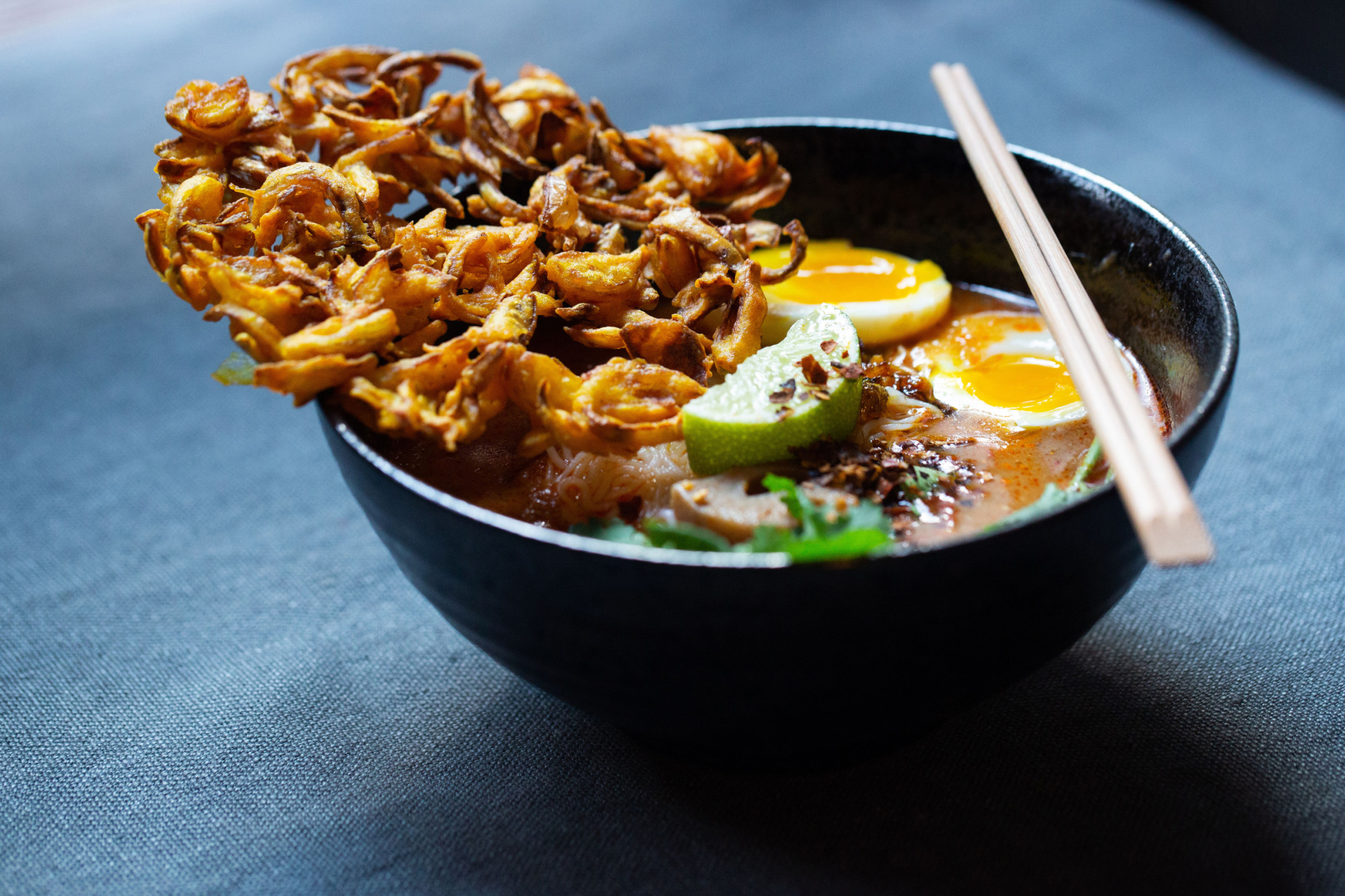

1. Mohinga (Lemongrass Fish Noodle Soup)
“This is my version of being at home with my mom in New York. In Queens. We like our broth thicker than how my aunt made it. It’s a breakfast noodle dish that’s very popular across Burma. It’s made with catfish as the base and mainly served with very thin rice vermicelli with onion fritters, and one egg. With lime, coriander. We love spice so we use a lot of these smoked chile flakes.
The main thing is the broth. First, we have to boil the catfish fillet with ginger, garlic, lemongrass, shallot, fish sauce, turmeric, and salt. Then we separate the broth and the fish. We kind of mush up the fish and add it to sauteed turmeric, paprika, and fish sauce that’s in a curry paste form. And then we add that to the fish broth and rice flour to make the mohinga.”
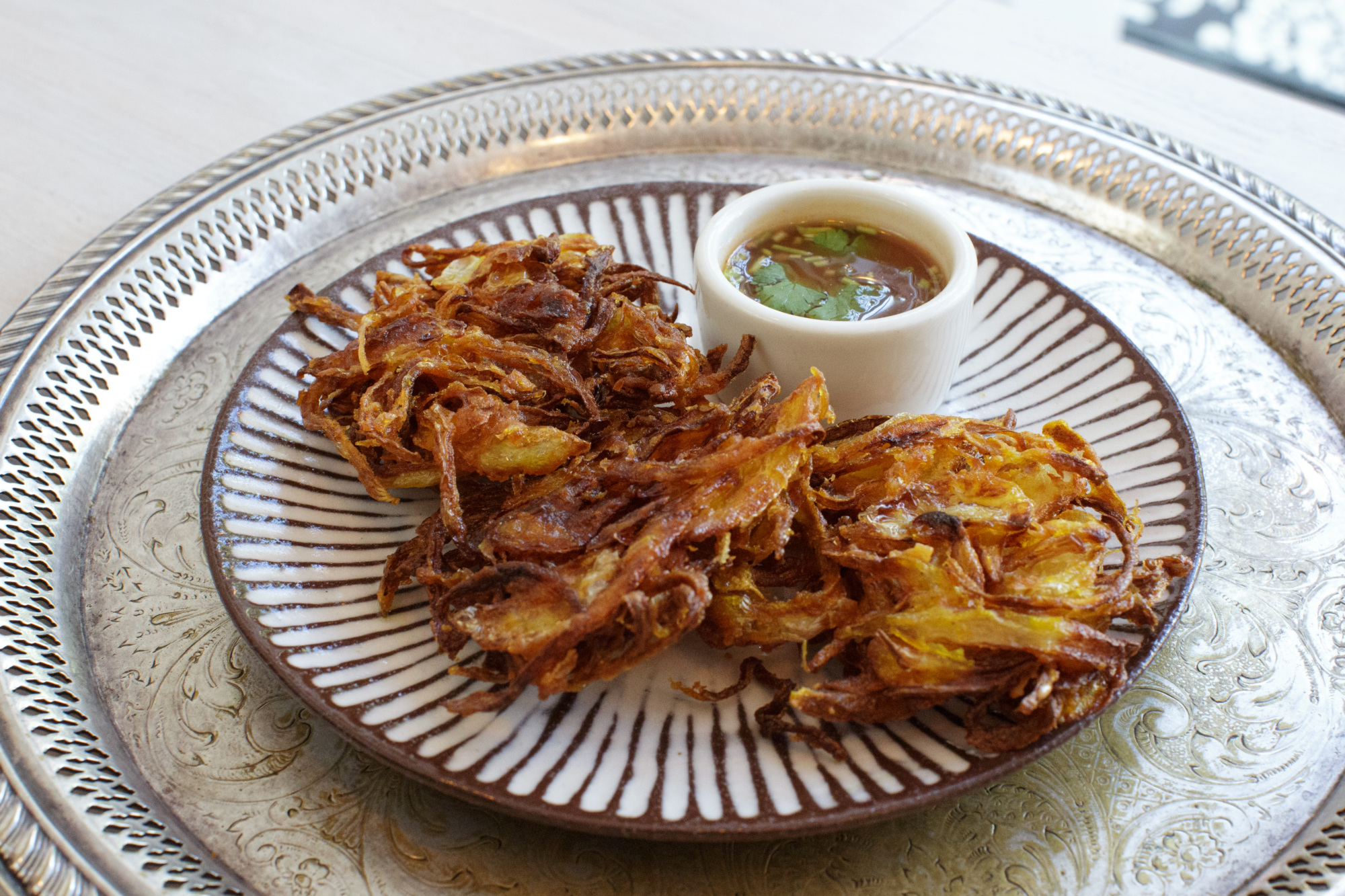
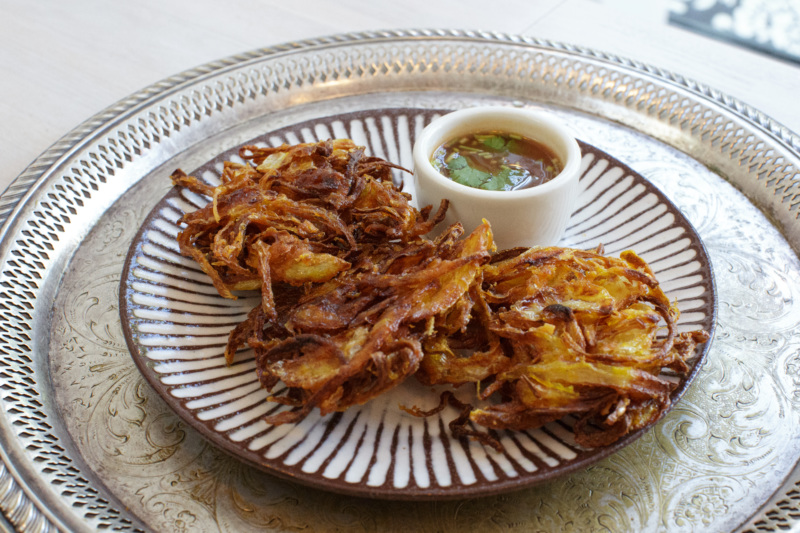
2. Kyatt Thyn Kyaw (Onion Fritters)
“Let’s go back to my childhood memory. There were a lot of these onion fritters stalls on the streets in Burma. Their fritters could be spicier, saltier, thicker or thinner, but they were all served with a tamarind dip.
It’s one of the most popular dishes at Rangoon [my restaurant]. There are three pieces in an order. On a busy night, we make 150 pieces. Plus, we use them to garnish the mohinga so yeah, we make a lot of fritters. We use about 100 pounds of onions a week.
For the fritters, we’ll use Spanish onions and red onions, and rice flour, turmeric, ground coriander and salt. We make something like pancake batter, and then we fry it, one fritter at a time, in a very shallow frying pan until it’s golden brown on both sides. For the dip, we use tamarind pulp and a lot of minced garlic — it’s very garlicky — and we do it vegan style with salt, sugar, mint, and coriander.”
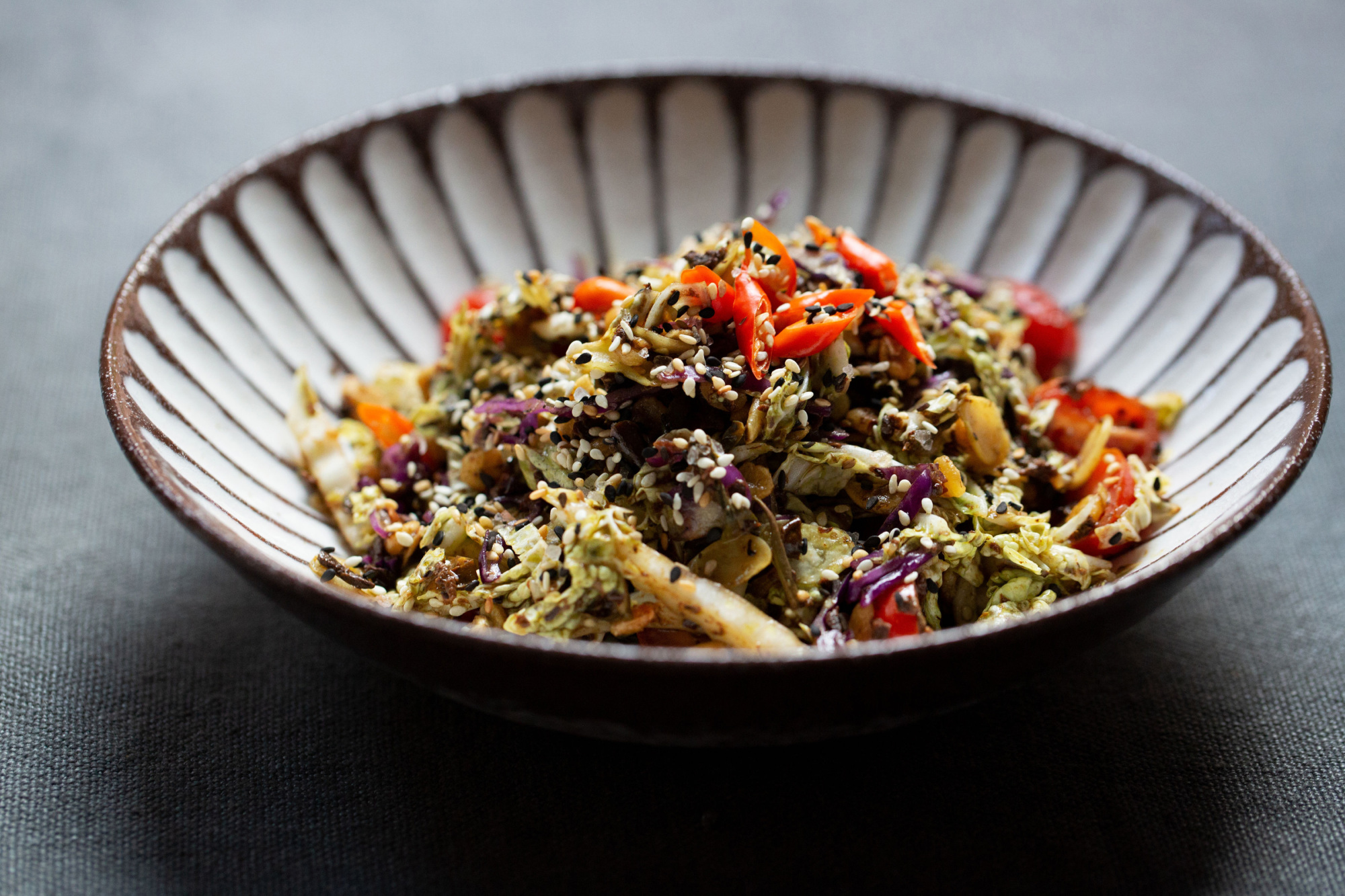

3. Lahpet Thoke (Tea Leaf Salad)
“This is the infamous Burmese fermented tea leaf salad. I think it’s a very rare ingredient that you find outside Burma, and so I think it became one of the most known Burmese dishes. I get the fermented tea leaves from Yoma, a Burmese importer in Boston. When I receive that order, they’re in what I call the ‘raw stage,’ with no seasoning, and they are very potent and bitter. I rinse the tea leaves in water three, four times to take away the bitterness, and then add in some salt, lime juice and oil to kind of marinate for a couple of days to make them really light, soft.
I wasn’t able to get them for a while during the shutdown, so I didn’t have any tea leaves on the menu. I’m very happy they’re available now.
This salad has maybe 16 ingredients: fermented tea leaves, regular green cabbage, red cabbage, Napa cabbage, tomatoes, tomatillos, crushed peanuts, roasted chickpeas, fried lentils, pumpkin seeds, sunflower seeds, sesame seeds added to that, to give a maximum crunch, a seasoning that’s salt, lime juice, and vegetable oil, and fresh red chile pepper for the customers who like it spicy.
When I was a kid, we were told not to eat so much of it because we were going to get caffeinated from the tea leaves. You do get energy from the caffeine, but slightly. It’s not very potent. But for me now, I don’t feel it anymore.”
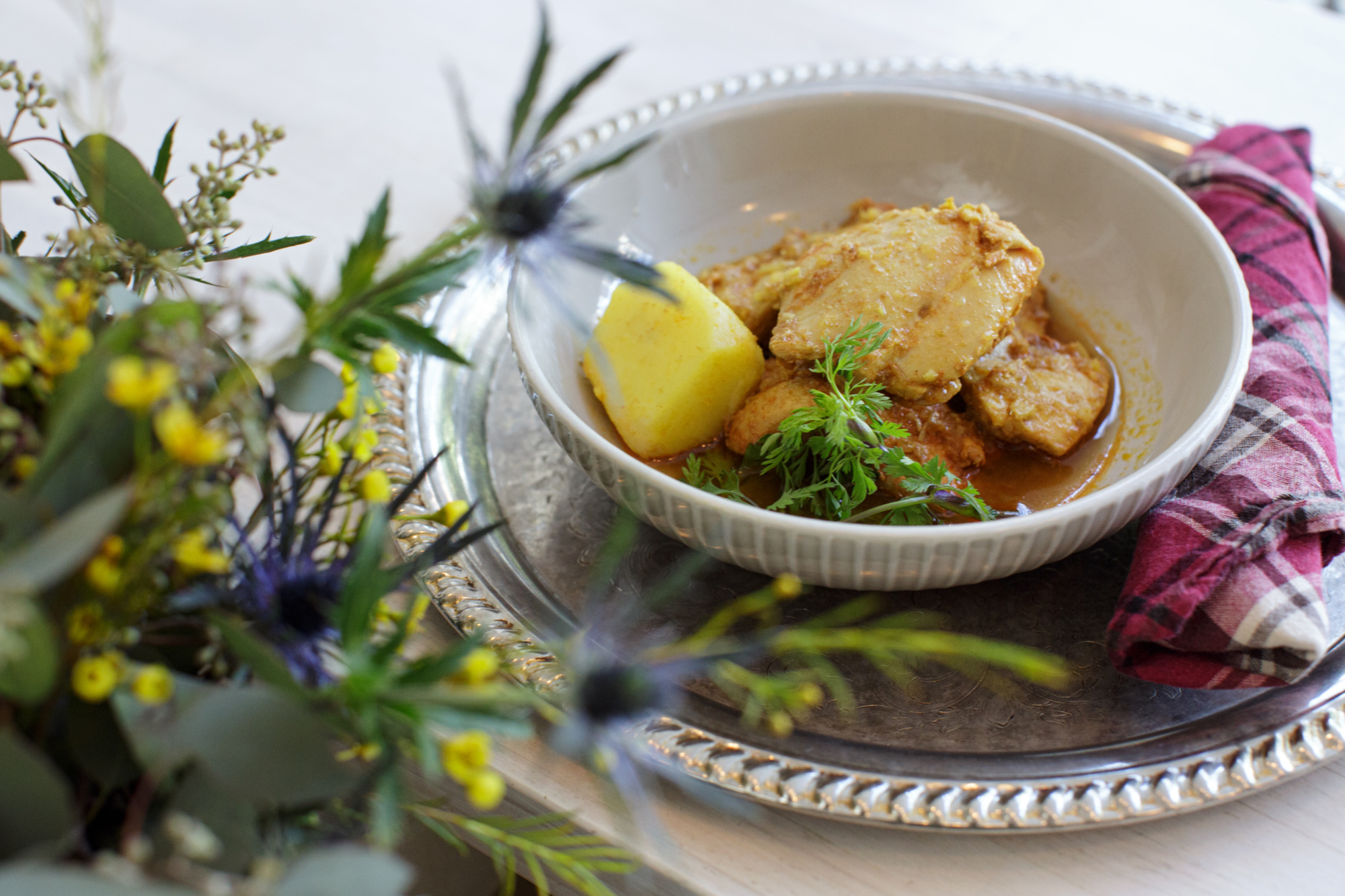
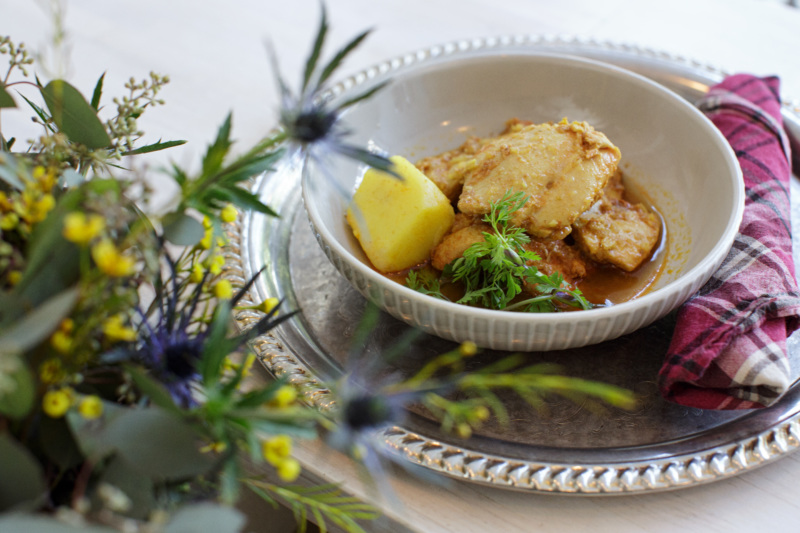
4. Kyet Thar Hinn (Rangoon Chicken Curry)
“This was my dad’s favorite dish. He loves chicken curry. This is how my aunt would make it, but I add a twist with the lemongrass. Living in New York, lemongrass has become a very friendly ingredient for me. It wasn’t as prevalent in my aunt’s cooking, but here, everything with lemongrass feels like home.
The Rangoon chicken curry is a basic chicken curry. We call it chicken sipyan. Sipyan sauce is a saute of minced garlic, minced onion, and minced ginger sauteed with tumeric and paprika. And then I add masala and minced lemongrass to it, so it’s like an Indian-style chicken curry with a touch of lemongrass. It’s very well-balanced. And then you add the chicken. I marinate the chicken with salt, brown sugar, turmeric, paprika, and mint, lemongrass, and ginger and garlic.”
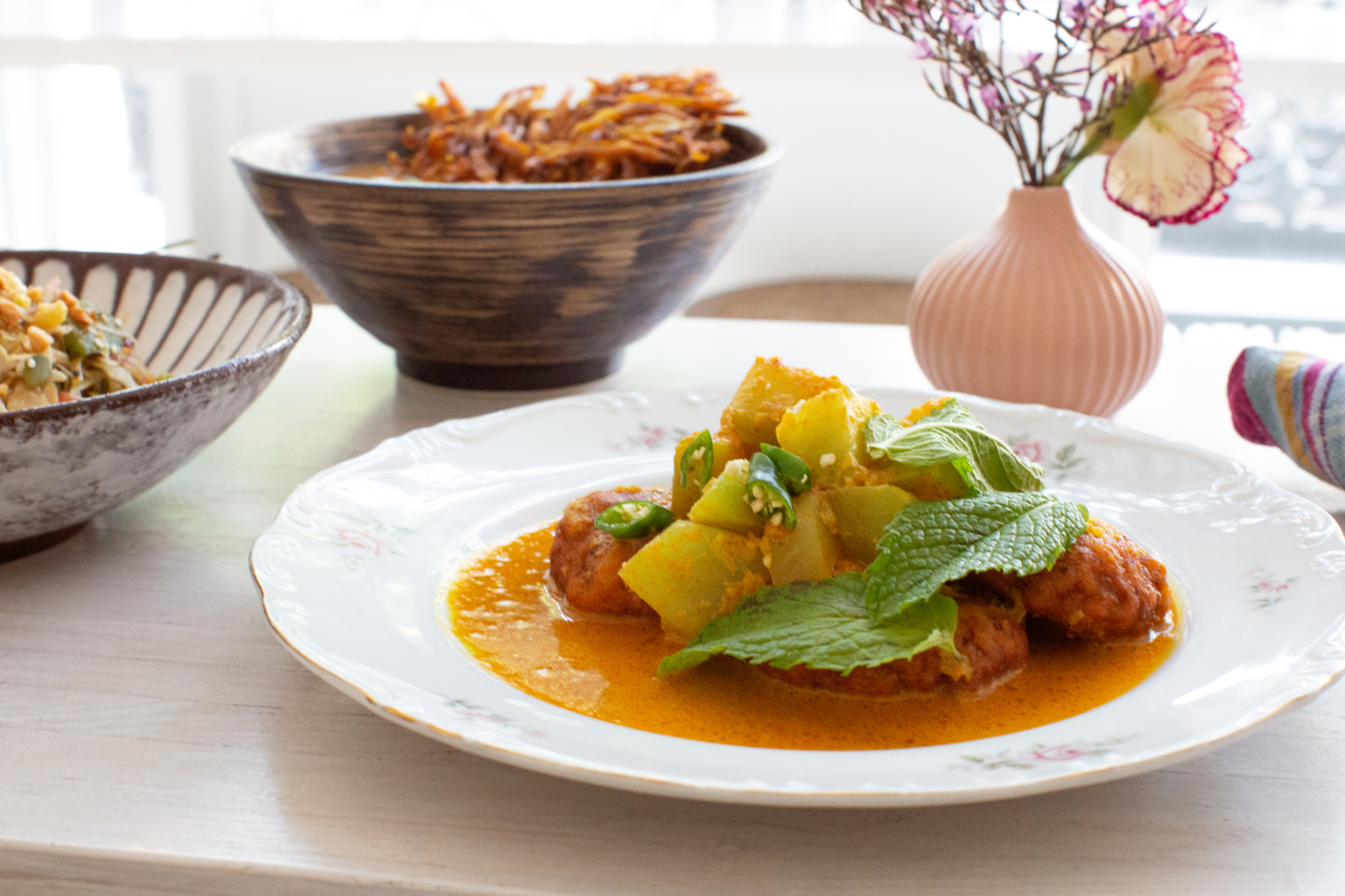
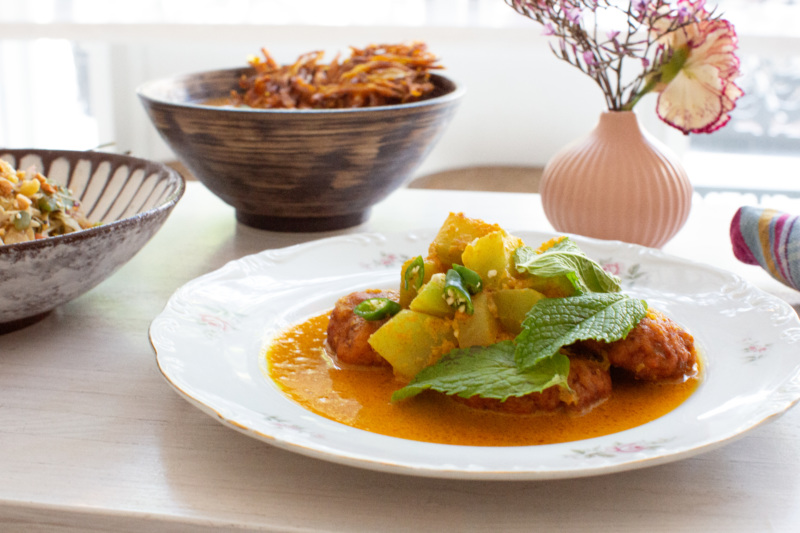
5. Nga Lone Hinn (Fish Cake Coconut Curry)
“It is a very unusual Burmese dish, because not a lot of Burmese make this dish. When I was in Burma, at my grandparents’ house, we made this only on special occasions like the New Year or my grandfather’s birthdays. We would invite Buddhist monks from the temples all over Burma over to our house and throw a big lunch party. People would sit on the floor and dine on a round table. My grandma would prepare this dish.
For the fish cakes, I use minced catfish — we mainly use catfish in Burma, too. And then we season with salt, sugar, turmeric, garlic, a little paprika for the color. So we mix them and then we make them into little two-inch, round shapes, and then we fry them in a shallow pan, about three, four minutes on each side until it’s browned, crispy, and puffy. I put that aside and then I make the sauce. It is a very simple coconut curry sauce. We add the turmeric and paprika, and saute them to make it a little more paste-y and then add coconut milk to it. It is a thick sauce, but not too thick either. And then we add some chayote squash to give more texture and flavor to the dish.”
Caroline Shin is a food journalist, and founder of the Cooking with Granny video and workshop series spotlighting immigrant grandmothers. Watch her award-winning show on YouTube, and follow her on Instagram. Follow Resy, too.

